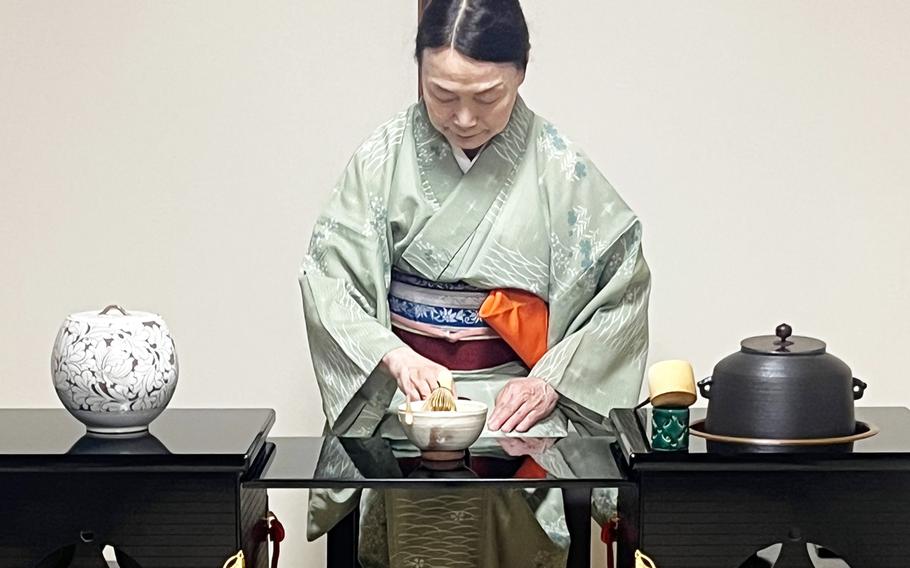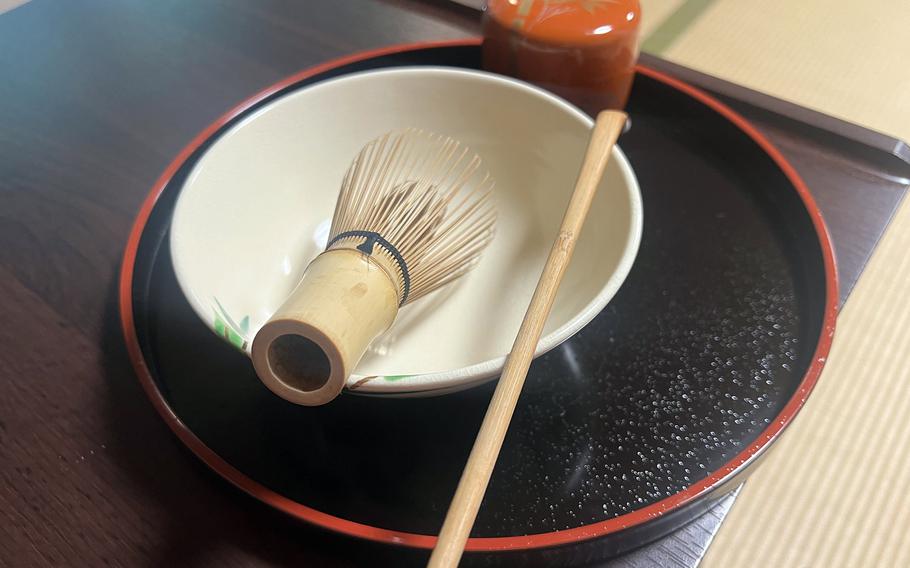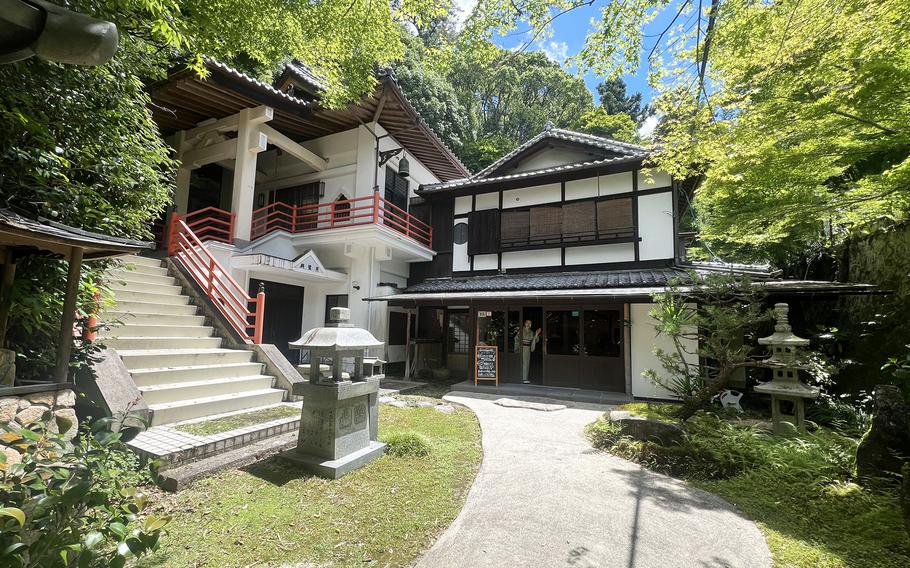
The hostess prepares for a tea ceremony at Tokujuji, a 300-year-old Zen Buddhist temple on Itsukushima, an island near Hiroshima. (Kelly Agee/Stars and Stripes)
Immerse yourself in a Japanese tea ceremony while wearing a kimono at Tokujuji, a 300-year-old Zen Buddhist temple on Itsukushima, an island near Hiroshima.
Though the style of drinking powdered green tea, whisked in a chawan, or bowl, was introduced to Japan from China in the late 12th century, it wasn’t popularized until the 14th century. That’s when Sen no Rikyu, from present-day Osaka prefecture, revolutionized Japanese tea culture and perfected the Japanese tea ceremony and elevated it to an art form.
Okeiko Japan, a community culture school, runs the English-friendly hourlong tea ceremony experience.
Before participating in the ceremony, you may change into a kimono. There is a wide variety of sizes, styles and colors to choose from. The host helps dress guests. For women there are also hair ornaments, or kanzashi, including pins, barrettes and fabric flowers and fabric hair ties.
Outside of the temple, you may participate in a photoshoot with accessories, including a fan and a parasol.

Though the style of drinking powdered green tea, whisked in a chawan, or bowl, was introduced to Japan from China in the late 12th century, it wasn’t popularized until the 14th century. (Kelly Agee/Stars and Stripes)
Next you are guided to the chashitsu, the tearoom for the chanoyu, or tea ceremony, which is a detailed and step-by-step process. The host guides you through the experience.
The ceremony starts when the master enters the room and bows. The guests return her bow and are presented with wagashi, a Japanese sweet.
The tea master purifies and prepares the utensils. The chawan, a bowl in which the tea is made and served, is preheated with hot water. That water is discarded and the bowl is wiped with a chakin, a small rectangular cloth.
The host prepares the tea by placing two large scoops of matcha powder into the chawan and adding hot water with a chashaku, a tea ladle made of bamboo, from a mizusashi, or pot. The ladle is filled all the way.
Half of the water is poured on top of the matcha powder. The other half is poured gently back into the mizusashi and the ladle is placed on top of the pot.

Tokujuji is a 300-year-old Zen Buddhist temple on Itsukushima, an island near Hiroshima. (Kelly Agee/Stars and Stripes)
The tea is then whisked with the right hand with a chasen, made from a single piece of bamboo, for about 30 seconds. This process is called temae.
Then the sen soeki serves the tea.
Pick up the bowl with your right hand and place it on your left hand, then turn it clockwise twice and bow.
On the last sip of tea, good manners dictate you make a slurping sound.
After the chawan is empty, it is customary to observe and appreciate the bowl’s design as well as read the seal on the bottom, which indicates where it was made.
It’s then the guest’s turn to make their own tea during this experience and the host will take video of guests participating in this process.
Other classes offered at Tokujuji are calligraphy and lucky charm making; the temple also offers kimono rentals.
Tokujuji Tea Ceremony
Location: 741-1 Miyajimacho, Hatsukaichi, Hiroshima 739-0513
Hours: Call 0829-30-9888 to make a reservation.
Prices: 12,000 yen
Dress: Casual
Directions: An 8-minute walk from JR Miyajima Ferry
Information: Online: okeikojapan-miyajima.com